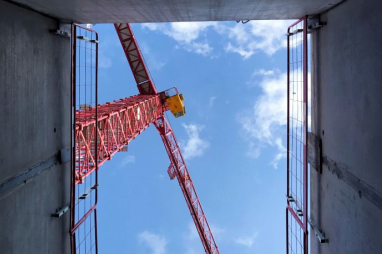
Construction sector optimism hits two-year high, says PMI
UK construction firms saw a strong improvement in business activity expectations in January, with optimism reaching its highest level for two years – according to the latest PMI report.
This was despite an ongoing decline in current output levels and a marginal fall in incoming new work.
Survey respondents cited hopes of a turnaround in client demand due to looser financial conditions and more favourable underlying economic prospects.
The headline S&P Global UK Construction Purchasing Managers’ Index™ (PMI®) – a seasonally adjusted index tracking changes in total industry activity – registered 48.8 in January, up from 46.8 in December and the highest reading since August 2023.
However, the index remained below the crucial 50.0 no-change threshold for the fifth month running and signalled a moderate decline in total industry activity.
Civil engineering was the best-performing sector in January (index at 49.8), with output levels close to stabilisation.
Commercial activity also showed some resilience, with the respective index pointing to only a marginal rate of decline (49.1).
Meanwhile, house building continued to fall sharply at the start of 2024 (index at 44.2).
Survey respondents noted subdued demand conditions and a lack of work to replace completed projects. The rate of contraction for residential activity nonetheless eased to the least marked since March 2023.
January data indicated a reduction in total new work for the sixth consecutive month, but the pace of decline was only marginal and the weakest seen over this period.
Companies reporting a fall in new business generally cited delayed decision-making among clients and subdued market conditions, especially in the house building segment.
Despite subdued order books, the latest data signalled a sharp upturn in business activity expectations. Around 51% of the survey panel forecast a rise in business activity during the year ahead, while only 12% predict a decline.
This pointed to the highest level of business optimism since January 2022. Lower borrowing costs and higher consumer confidence were cited as factors likely to boost construction activity over the course of 2024.
Tim Moore, economics director at S&P Global Market Intelligence, which compiles the survey said: “UK construction companies seem increasingly optimistic that the worst could be behind them soon as recession risks fade and interest rate cuts appear close on the horizon.
“The prospect of looser financial conditions and an improving economic backdrop meant that business activity expectations strengthened to the highest for two years in January.
“Moreover, there were again signs that customer demand is close to turning a corner as total new orders fell to the smallest extent for six months.”
However, industry gave a cautious response to the latest data.
Brian Smith, head of cost management and commercial at AECOM, said even as confidence for the year ahead ticks up, high inflation and tight credit conditions will impact that sector’s recovery as firms contemplate reducing the size of their workforce.
“Construction output has continued to struggle throughout the winter, with five months of contraction,” he added.
“Wet weather can be partially attributed to some of the recent fall in activity, but the greater concern is the high inflation and tight credit conditions that continue to hamper housebuilding and are beginning to be felt in commercial development.
“These latest figures will hopefully provide greater ambition when it comes to the sector’s long-term approach to resourcing, which represents a growing risk.
“Reducing workforce capacity in response to broader economic headwinds will ultimately impact future planning and projects at a time when competition for contracts is increasing.”
Max Jones, director in Lloyds Bank’s infrastructure and construction team, added: “Despite a rise in output, many in the industry that are tied into fixed price contracts are seeing their margins eroded as broader issues – including materials inflation and guidance around new builds – bring unforeseen costs.
“Those with niche specialisms, particularly in the infrastructure space, could be amongst the best performing in the coming months.
“It’s an area that we are increasingly seeing businesses investing more in, including in water infrastructure, data centres and solar and wind power facilities.
“Together with investment in skills and diversification, it has all the elements of a more prosperous year ahead.”
Data was collected from January 11-30.